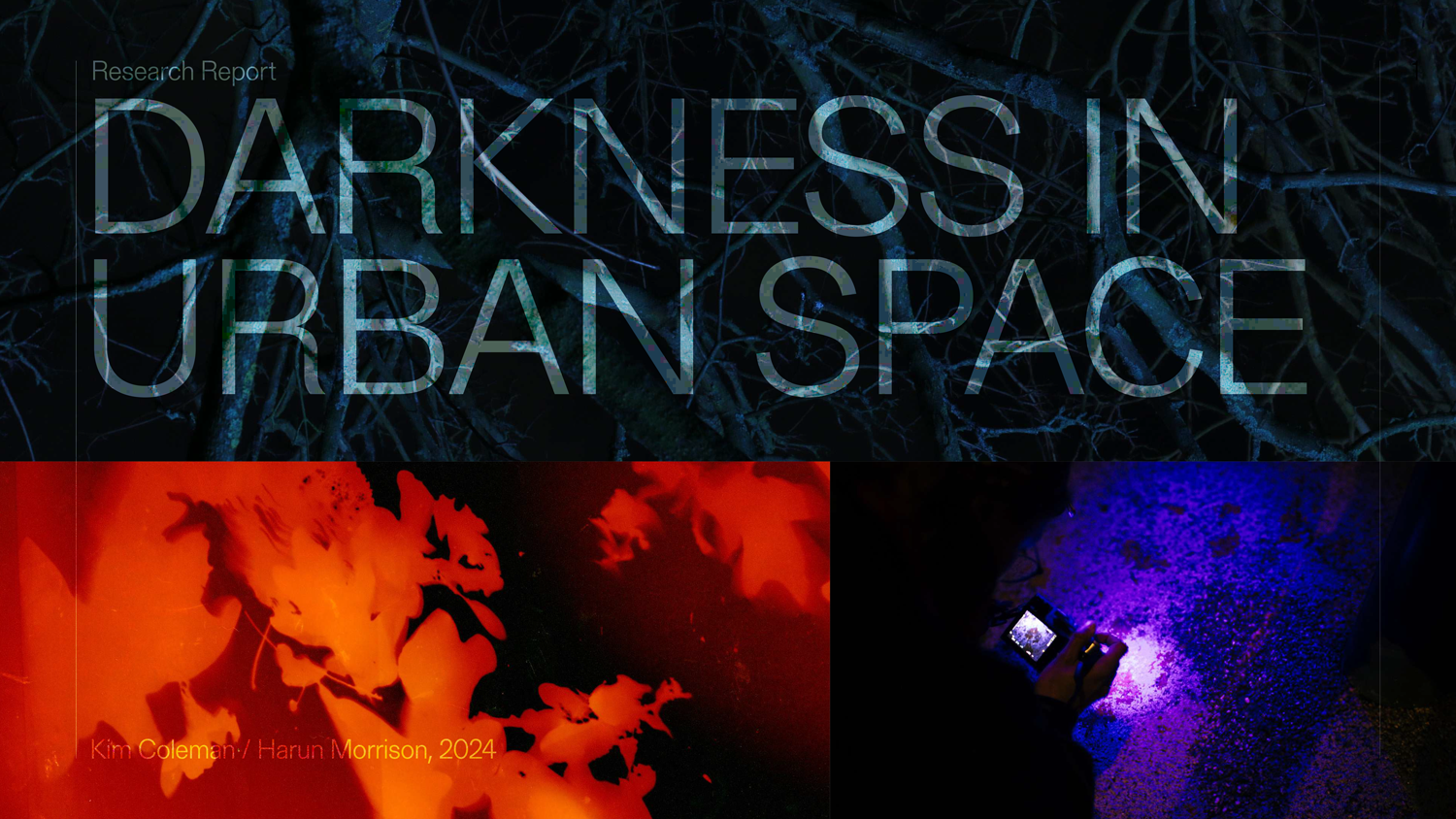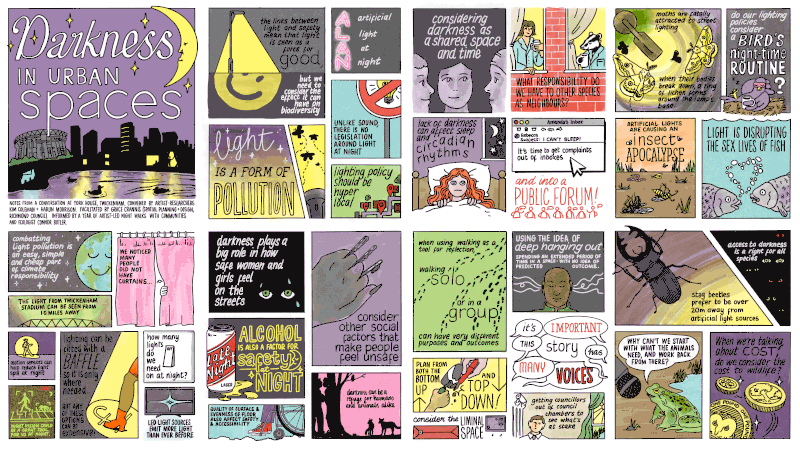Darkness in Urban Spaces
Darkness in Urban Spaces is a research project by artist researchers Kim Coleman and Harun Morrison. Their project explores human relationships and more-than-human relationships with darkness.
The project was commissioned in 2023 through a collaboration between our Spatial Planning and Design Team and Richmond Arts Service. The aim is for artist-led research outcomes to give policy makers new insights.

Darkness in Urban Space: research report
By Kim Coleman and Harun Morrison, 2024.
About the project
Choosing whether to light our parks and open spaces can be contentious. Many of Richmond’s green spaces are 'dark corridors' - left intentionally dark to avoid unnecessary artificial lighting that can disturb protected species like bats.
However, for many people who use parks and green space, darkness can compromise their ability to use, enjoy and feel safe in these areas. Much of the UK, especially London, experiences high levels of light pollution, which has a significant impact on biodiversity. Despite this, artificial light is not recognised as a pollutant in UK law.
Process
The artists chose Ham as a case study area and held monthly walking workshops with community members, council staff and local area experts. They used lens-based and cameraless photography as tools to explore darkness and light.
Ecologist Connor Butler supported the artists by helping to map dark spots and corridors that non-human life prefers and which animals use the site at different points of the day.
Research questions
The project explored the following questions:
- How is darkness used and experienced in urban spaces by different groups?
- What are the needs for darkness in urban space?
- How do these needs converge or diverge?
- How can we communicate findings in a way that affects future policy?
Research report
Read the Darkness in Urban Spaces research report.
Workshop for council staff
A two-part workshop was held to share learning from the project. Part one was a guided walk around Ham Lands with Coleman and Morrison, led by Ecologist Connor Butler. Part two was a facilitated discussion about how we could implement the recommendations.
See a live scribe comic of the workshop by artist Bridget Meyne:

Project recommendations
Coleman and Morrison have developed a series of recommendations for local policymakers based on their experiences. Planning, policy and design have a vital role to play in addressing these issues.
The project recommendations included several key points:
- Central government, local councils, and planners should recognise and respect the value of human and non-human access to darkness and incorporate this into their decision-making processes
- Darkness should not only be understood as a social negative or generator of conditions for fear, but also as a vital part of urban life and a site of pleasure and community
- Safety in public spaces shouldn’t only be predicated on the illuminated/bright city, but also consider broader social factors
- It should be recognised that both humans and non-humans need darkness for health
- Lighting is one consideration among many for wheelchair users and those pushing prams or trolleys. Quality and evenness of surfaces and paths equally factor
- There are environmental and financial advantages to using less artificial lighting at night
- Achieving darker urban space can be welcomed by some communities and is technically simple to address compared to other major environmental problems
About the artists
Kim Coleman is an artist based in London. Her co-authored and solo projects have been commissioned by The ICA, Frieze Projects, The City of Edinburgh, and Glasgow International. In 2023 she completed a PhD with Reading School of Art.
Harun Morrison is an artist and writer based in London. He was recently an associate artist with Greenpeace UK and designer and researcher in residence at V&A Dundee.
Additional project credits
- Live scribe comic – Bridget Meyne
- Photography – James Allan
About Cultural Reforesting
Darkness in Urban Spaces is part of the Cultural Reforesting programme; a decade-long, artist-led programme responding to the ecological crisis, exploring how we can renew our relationship with nature.
This project was initiated by Richmond Arts Service and involves collaborations with local and global partners, participants and cultures.
Coleman and Morrison’s artwork is on display as part of the Cultural Reforesting exhibition at Orleans House Gallery from 27 March to 31 August 2025.
Up to: Planning policy
Updated: 14 April 2025
 Stay up to date! Make sure you subscribe to our email updates.
Stay up to date! Make sure you subscribe to our email updates.
